In Chapter 10, Li & Bernoff highlight the important role of Twitter for firms that want to tap into the groundswell. While Twitter is a very simple and basic social media platform that limits its users to 140 character its advantages are that it is free, open, connects people, and gives them power (Li & Bernoff, 2011, pg. 197). With that said, Twitter’s popularity has increased over the years and “is now the center of a whole ecosystem of interactions” (Li & Bernoff, 2011, pg. 197).
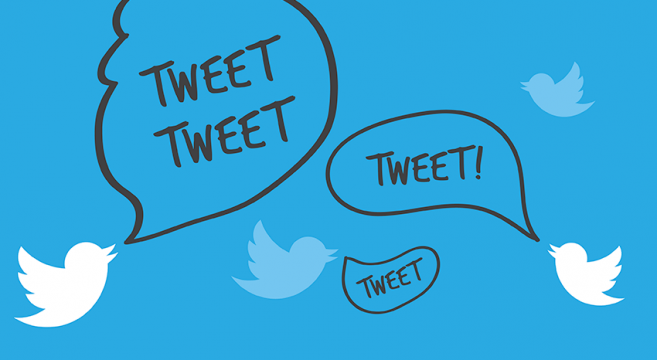
There are six elements to that above-noted ecosystem, the six elements are:
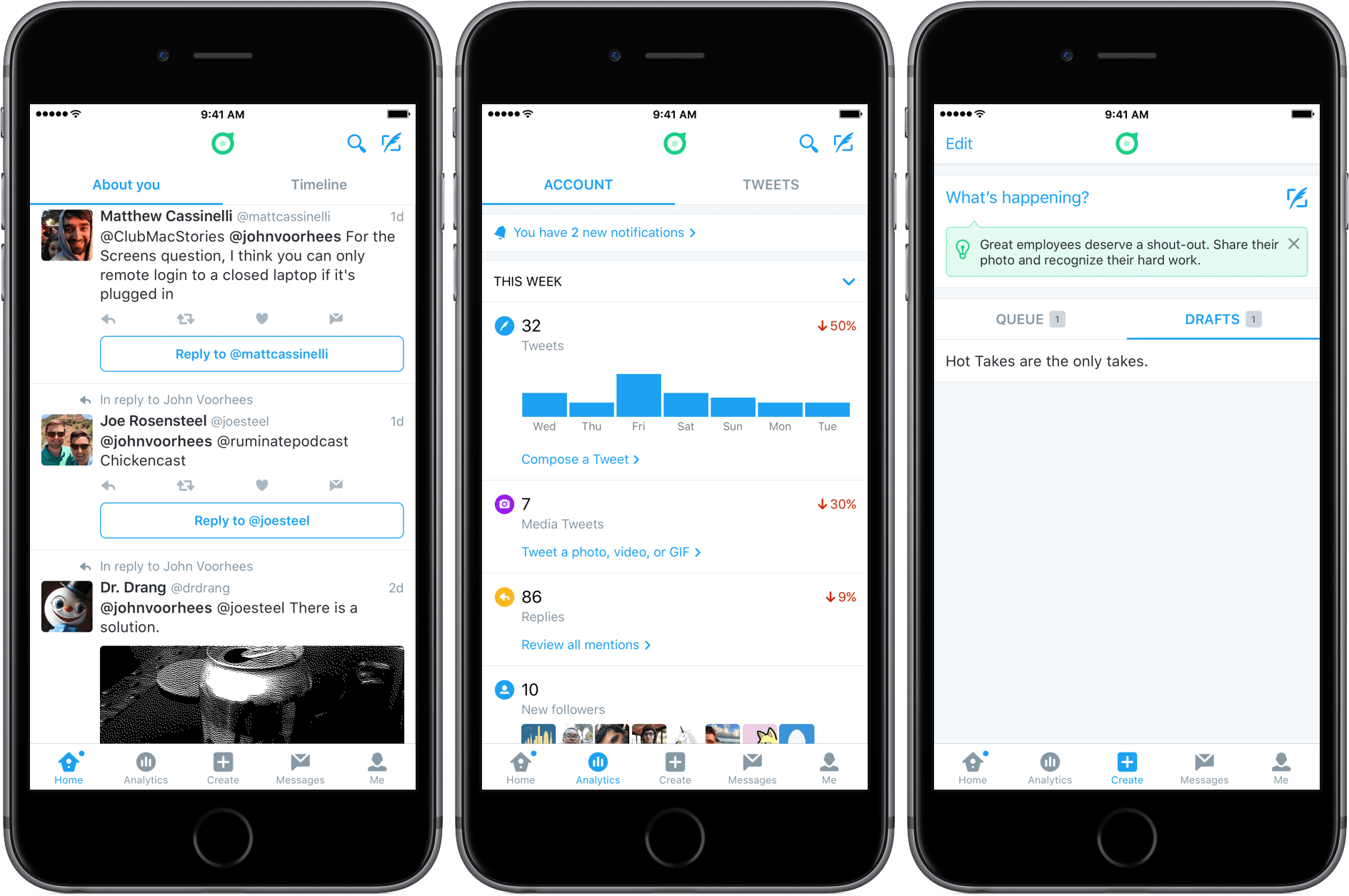 enrich their tweets.
enrich their tweets.Previously, we learned about the five groundswell objectives. Twitter can actually be used to meet each of them.
ListeningTwitter is especially useful when your company wants to listen to the groundswell. Firms should have someone identifying and monitoring whether influential Twitter users are talking about your brand; in fact, there are several tools that not only monitor tweets but can also help identify the overall sentiment (Li & Bernoff, 2011, pg 202).
TalkingTwitter is a great platform for a company to talk to the groundswell. However, it is boring and useless if a company doesn’t do a good job. Companies should avoid tweeting out links that direct their followers to their website or their press release, instead they should focus on putting out creative and retweet worthy content. For example, many companies use Twitter to announce special discount codes and promotions. In the case of ELLE Magazine, they are extremely active on Twitter. They currently have 6.41 million followers and have 126,000+ tweets.
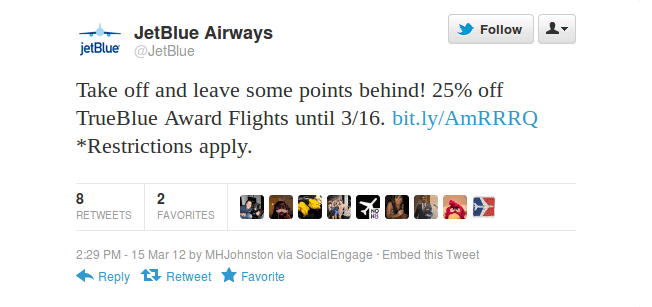 Example tweet from JetBue Airways advertising a special promotion
Example tweet from JetBue Airways advertising a special promotion
Moreover, companies should respond to tweets and create conversations in Twitter with the groundswell. They can respond to questions and address complaints to show they care and actually want to rectify ant issues.
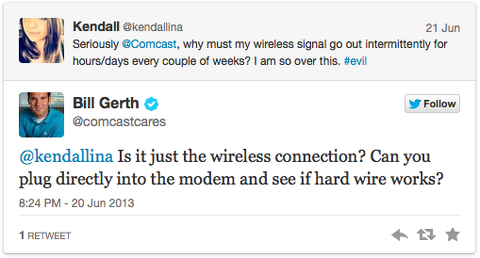 An example of a Comcast employee responding to a complaint.
Energizing
An example of a Comcast employee responding to a complaint.
Energizing
In order for a brand to energize the groundswell, they have to listen to them first. “Energizing on Twitter means responding to fans and retweeting them, as well as giving them content to retweet to their own followers” (Li & Bernoff, 2011, pg 204). An example of energizing your groundswell in a negative way, ELLE Canada posted a controversial tweet that led to some backlash from the Black community back in 2015.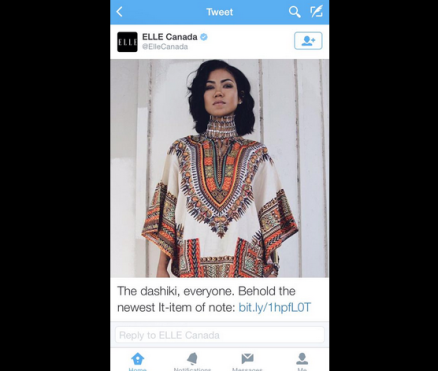 ELLE Canada had posted a photo of a dashiki and referred to it as the next it fashion item and failed to recognize it’s actually a piece of clothing that not only belongs to a culture, but it has also been worn for centuries by West Africans and other groups in the East. After receiving backlash and an influx of criticisms, ELLE Canada deleted the tweet.
ELLE Canada had posted a photo of a dashiki and referred to it as the next it fashion item and failed to recognize it’s actually a piece of clothing that not only belongs to a culture, but it has also been worn for centuries by West Africans and other groups in the East. After receiving backlash and an influx of criticisms, ELLE Canada deleted the tweet.
Twitter has become a popular way for companies to do support. Nowadays many consumers will turn to Twitter to contact companies rather than calling a support hotline, and even if brands don’t respond consumers will continue to mention and talk about the brands. ELLE Magazine rarely, if ever, responds to mentions on Twitter but users are still tagging and @mentioning them in response to their content. Most of the time it is positive feedback to their tweets/content but sometimes it includes negative feedback as well.
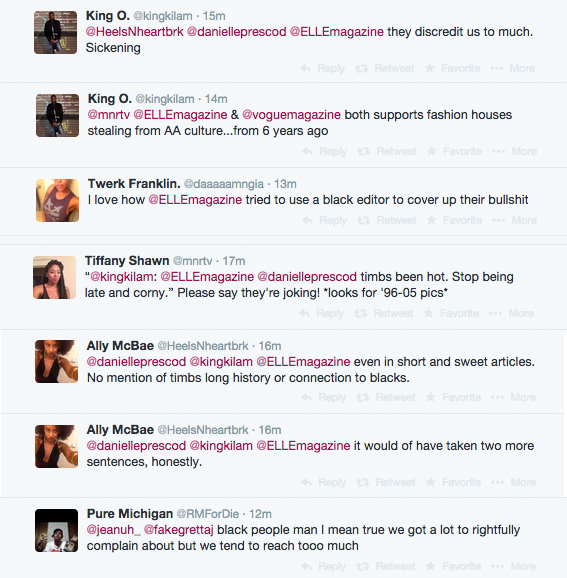 An example of ELLE Magazine being mentioned in a series of tweets from readers who were upset that the magazine has forecasted Timberland boots as the “it” winter boot in 2014. The boots have been around for decades.
Embracing
An example of ELLE Magazine being mentioned in a series of tweets from readers who were upset that the magazine has forecasted Timberland boots as the “it” winter boot in 2014. The boots have been around for decades.
Embracing
It’s difficult to embrace the groundswell through Twitter since it requires a company to not only acquire a large following but it forces them to say what they want to say within 140 characters. There’s been plenty of companies who have successfully embraced twitter and helped their brands grow, but there’s also brands who have created more negative press than positive. The best way to embrace the groundswell via Twitter is “simply to engage in dialogue” (Li & Bernoff, 2011, pg. 208). ELLE Magazine needs to work on engaging their audiences because they currently use Twitter to its bare minimum– to share content directed to their website.
Personally, I started a Twitter account in 2007 and used it as a way to try to connect with celebrities (insert embarrassed face) but since not many people were on it at the time it was quickly abandoned/deleted. Since then I’ve used Twitter casually but never made an account (perks of everything being public) or tweeted my own content– I more so relied on it for news and quick live updates for certain events. I didn’t get back on Twitter until I took the Public Relations course at NAIT but I never kept up with it. I will try to maintain this new Twitter but no promises. If anyone wants to follow me, I can be found here.
References
Li, C. & Bernoff, J. (2011). Groundswell: winning in a world transformed by social technologies. Boston, USA: Forrester Research Inc.





